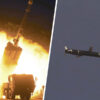The hospitals in northern Gaza are facing a severe onslaught from the Israeli military, leading to challenges in documenting casualty figures. The Ministry of Health in Gaza has been grappling with updating casualty figures as Israeli forces increasingly target hospitals and allied services in the besieged enclave. The United Nations has raised concerns over the “collapse of services and communications” at hospitals in northern Gaza, which is seriously impeding the work of health officials.
The last official update on casualty figures came on November 10 at 2pm (12:00 GMT), after a two-day gap. The government media office in Gaza reported that the death toll had risen to 11,100, including over 8,000 children and women. The media office stated that the targeting of hospitals and the prevention of access to bodies and the wounded hindered the Ministry of Health from issuing accurate statistics.
The Health Ministry in Gaza has been providing daily updates since the war began, following a surprise attack by Hamas inside Israel that resulted in approximately 1,200 deaths. However, Barbara Leaf, assistant US secretary of state for Near Eastern affairs, recently suggested that the actual number of casualties in Gaza may be higher than reported.
The UN relief agency confirmed a breakdown in communications, preventing the collection of new figures. It is estimated that nearly 3,000 Palestinians remain missing, possibly trapped or deceased under rubble, while another 27,490 Palestinians have reportedly been injured, as stated by the Health Ministry on Friday.
The Health Ministry explained its methodology for compiling data on Palestinian casualties. Victim data, including ID numbers and personal information, along with arrival times, are recorded in the hospital’s computerized information system. Non-governmental hospitals use their own forms to record data, which are then sent to the Health Information Centre at the Ministry of Health for entry into the central database. The ministry processes and verifies the data for completeness, ensuring there are no duplicates or errors.
Israeli air raids have targeted areas in and around hospitals and medical centers across Gaza since the start of the war, which Palestinians and international medical NGOs dispute as Hamas operating in those areas. Despite Israel not providing evidence for its claims, hospitals have increasingly become the focus of Israeli forces during their ground offensive in northern Gaza. Al-Shifa Hospital, the largest facility in Gaza, is now surrounded by Israeli tanks, while snipers and drones positioned around the area continue to target people.
Dr. Ahmad Mokhallalati, a surgeon at the hospital, reported continuous airstrikes and drones hovering within the hospital area, making it difficult to provide adequate treatment for patients. He witnessed a family being shot and injured while attempting to leave through an exit that the Israeli military had designated for civilians. Mohammed Abu Salmiya, the facility’s director, expressed deep concern over the deaths of two premature babies due to an electricity failure at the neonatal intensive care unit, with 37 more babies at risk of imminent death.
Al-Quds Hospital has also been severely affected, with a shortage of fuel and a power outage rendering it inoperable. The World Health Organization (WHO) lost communication with its contacts at the hospital and has received reports of people being killed while attempting to flee. The UN and international rights groups have been issuing warnings about the lack of safe havens for Palestinians in Gaza, particularly the most vulnerable.
UN shelters have not been spared from the violence, with 66 internally displaced people killed and 588 injured while seeking refuge. The UN emphasized that hospitals are entitled to specific protection under international humanitarian law. The situation in northern Gaza is dire, with hundreds of thousands of people struggling to obtain essential supplies for their survival. Unsafe water sources raise concerns about dehydration and waterborne diseases.
As the conflict in Gaza continues, the targeting of hospitals and the resulting difficulties in documenting casualties and providing healthcare services remain a grave concern. The international community and organizations such as the UN and WHO continue to call for an end to the violence and the protection of civilians, especially those seeking medical assistance.



